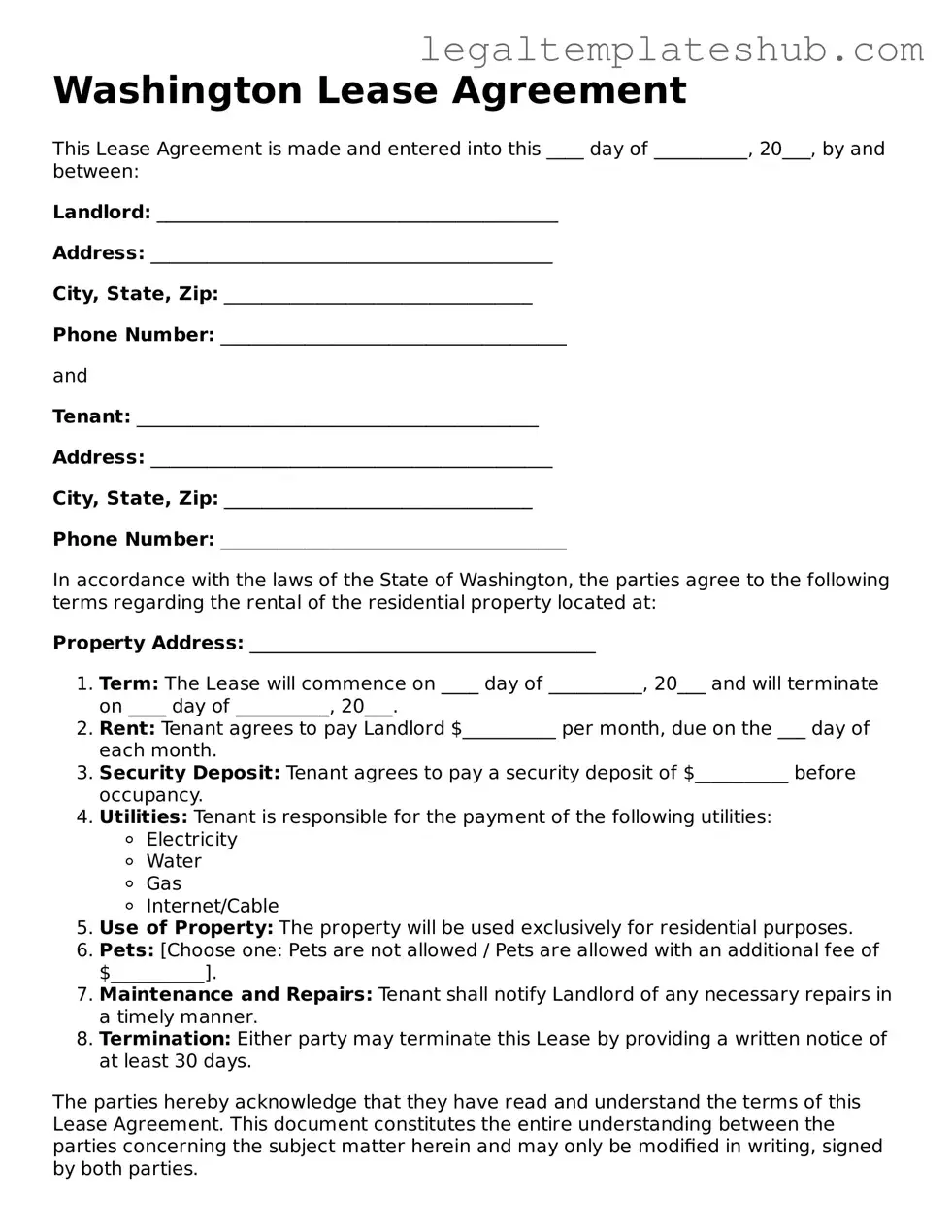Printable Lease Agreement Document for Washington
A Washington Lease Agreement form is a legal document that outlines the terms and conditions between a landlord and tenant for renting residential or commercial property in Washington State. This form serves to protect the rights of both parties and ensures clarity regarding rental terms, payment schedules, and property maintenance responsibilities. To get started on your lease agreement, fill out the form by clicking the button below.
Access Editor
